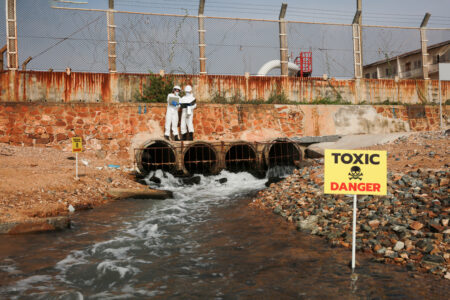
Share On Social!
Would you still buy your favorite fragrance spray if its package had a “hazard” sticker on the front?
That’s what researchers from the Royal College of Physicians and the Royal College of Pediatrics and Child Health in the United Kingdom hope to see, according to The Times of London. Their recent study of volatile organic compounds (VOCs) in products prompted the call for such warnings.
“Liberally going around spraying chemicals around your house that are complex and react with other chemicals — you’ve got to weigh up the benefits of that,” said Stephen Holgate, a professor of Immunopharmacology at the University of Southampton and one of the review authors. “Are there not other things you can do, like buy a nice bunch of flowers?”
Issues in Products
Similar to the conversation happening in the U.S., English researchers and government officials are discussing the harms chemicals in products have on consumers.
Studies have shown that a variety of products, from cosmetics to paint strippers, pose serious health effects in those who experience short- and long-term contact. Latinos, who already face exposures they have no control over, also are targets of direct marketing campaigns for some of the products of concern.
These products contain numerous harmful substances, such as VOCs, that can cause many different complications, including headaches, dizziness, and the development of Toxicant-Induced Loss of Tolerance (TILT). TILT can spur many health complications.
“We spend up to 90% of our time indoors,” Holgate said. “It’s inconceivable that the health effects of outdoor air pollution just occur because of the 10% of time that people spend outdoors.”
Need for Labels
Holgate and his colleagues think one way to reduce exposure is adding a warning for all consumers.
Specifically, they recommend adding a stand-out indicator that people will notice, such as a “skull and crossbones.”
Some have called this and previous ideas over-the-top, given the lack of overall research, according to the Times.
Still, researchers stand by their suggestion.
Alastair Lewis, a professor of atmospheric chemistry at the University of York, said there is also a need to change the status quo as quickly as possible.
“We don’t want to continuously live through endless cycles of fire-fighting pollutants that we knew about and could have done something about but didn’t,” Lewis said. “That’s where VOCs are at the moment: you can clearly see that over the next decade we will have to do something about this class of pollutant. Wouldn’t it be nice, just for once, to get ahead of the curve and be acting on these things before they become the next diesel engine NOx scandal?”
Label Use Across the Pond
While this idea comes from the U.K., companies in the U.S. are beginning to take similar steps to reduce harmful exposure.
Last month, Target began labeling some products with “clean” labels. While those items are not entirely chemical-free, they are safer than other harmful products.
Apple has also been on a path to reduce the dangerous substances in their products as part of their overall environmental strategy.
Holgate compared this idea to the kinds of labels found on food packaging. Different items will contain labels indicating the various levels of ingredients such as salt, fat, or sugar, which help inform the consumer of what they are buying.
Still, those hoping to reduce indoor exposures in the home can:
- Purchase chemically-reduced or -free products
- Remove fragrance products from the home
- Open the windows to remove smells and allow air flow
Those who would like to discover more about chemical intolerance and potential TILT triggers can take the BREESI & QEESI tests. These assessments, created by the Hoffman TILT research team at UT Health San Antonio, give an overview of the harmful substances in one’s environment.
Read more about chemical, environmental exposure!
Editor’s Note: This article is part of a collaboration between Salud America! and the Hoffman Toxicant-Induced Loss of Tolerance (TILT) program at UT Health- San Antonio. To find out if you are TILTed due to exposure to everyday foods, chemicals, or drugs, take a self-assessment or learn more about TILT.
Explore More:
Chemical & Toxic ExposureBy The Numbers
1
Quick Survey
Can help you find out how chemically sensitive you are



